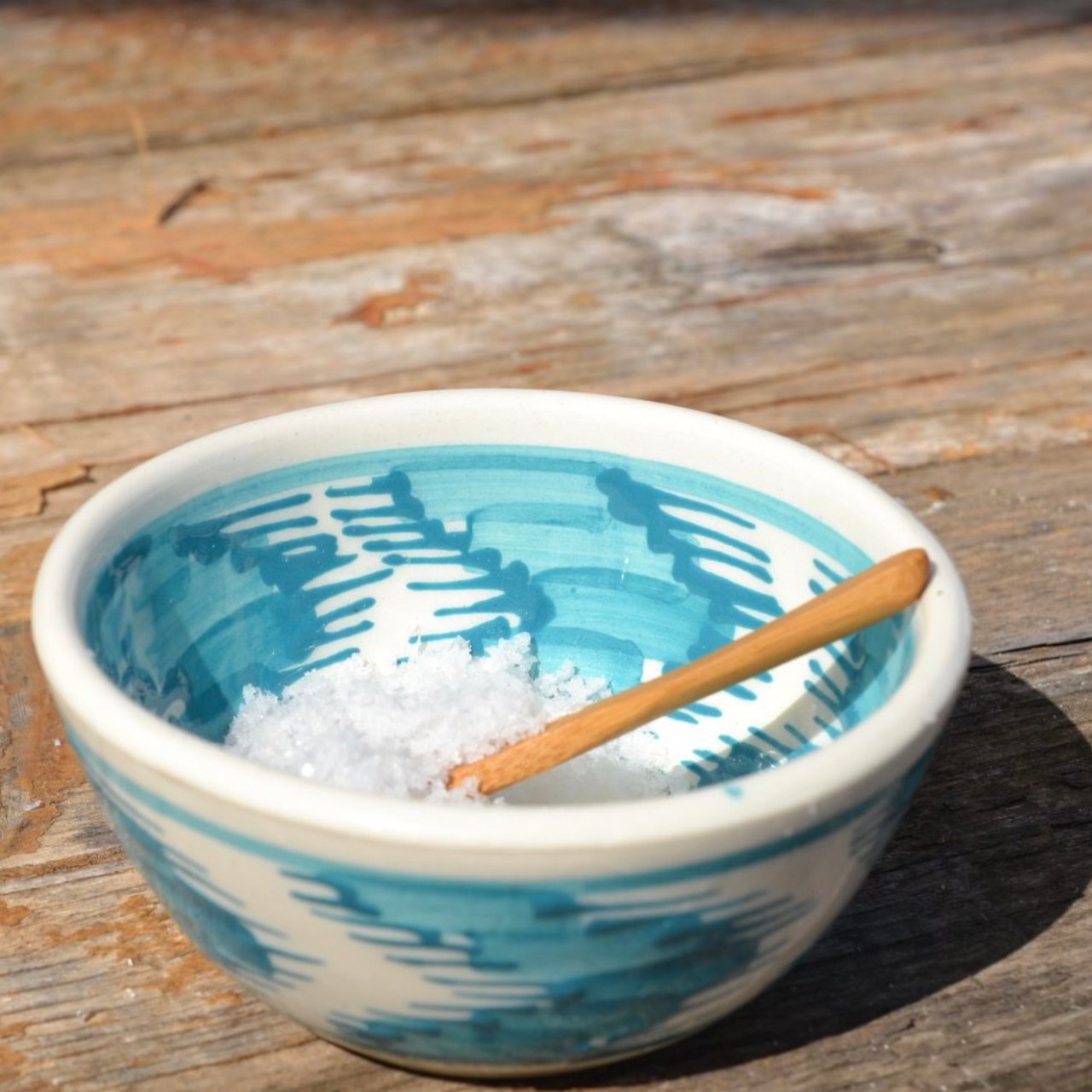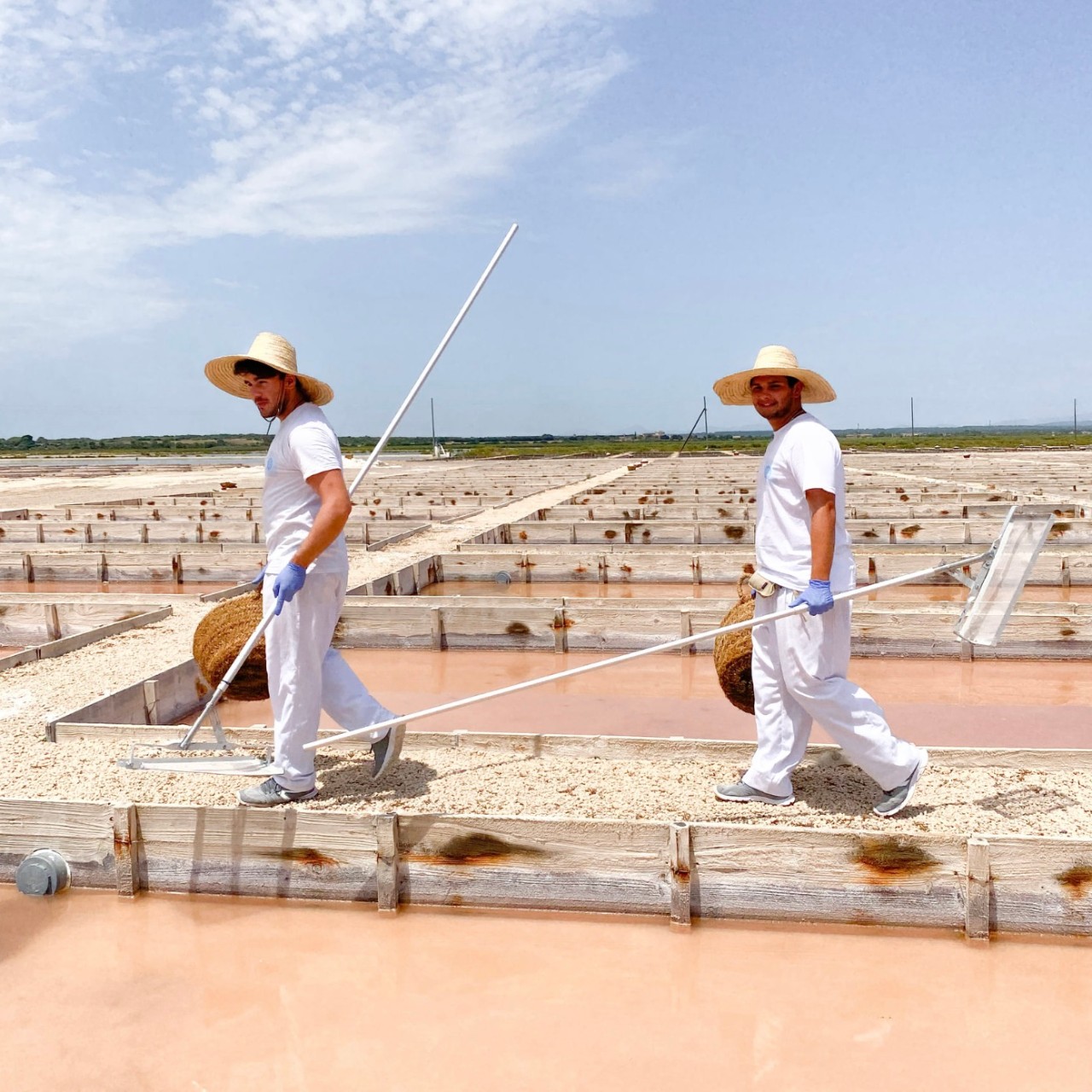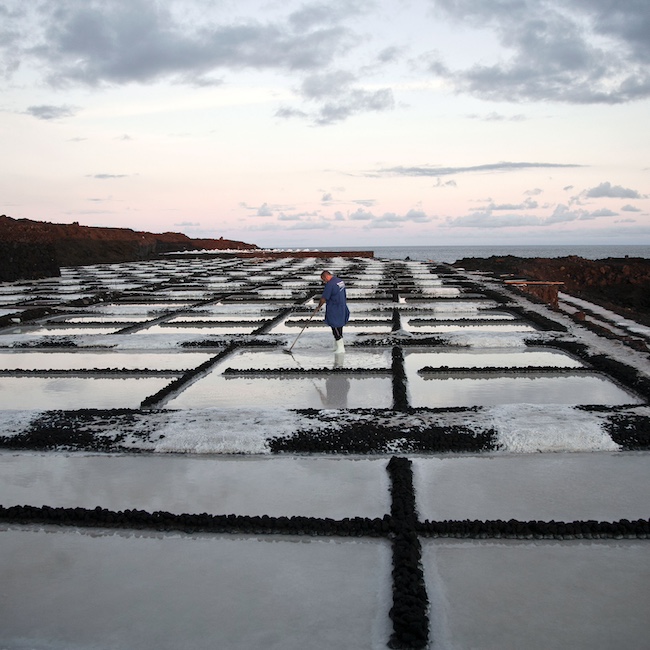.png.transform/rendition-xs/image_image%20(1).png)
A Spanish Pinch of Salt
Spain has a long tradition of salt production that dates back to Roman times. Respect for nature allows for the creation of high-quality varieties that captivate chefs and the international market
A team of people walk through the Es Trenc salt flats on the island of Mallorca, rakes in hand. They carefully collect the fleur de sel that naturally floats on the water, emerging from the bottom. This entirely manual process involves placing the salt flowers in wicker baskets to drain water for around 24 hours. Then, the salt flowers are spread on tables to dry in the air under the sun. The work is completely ecological.
This artisanal "agriculture" of salt (as many call it) makes Flor de Sal d'Es Trenc an exceptional product, produced only during specific months, and included in the Traditional Food Catalogue of the Balearic Islands. "It's a small miracle of nature in a completely protected area, free from industrial and urban centers," explains Laura Calvo, Head of Marketing, Communication, and Institutional Relations at Flor de Sal d'Es Trenc.
"It's also a salt with lower sodium chloride content and a higher magnesium content: 20 times more compared to others. This double chemical composition enhances flavors, which is ultimately the purpose of salt," says Calvo, adding that it is "a little sweeter and less coarse on the palate than others."

Quality Salt Across Spain
The fleur de sel d'Es Trenc from Mallorca is ranked number one in quality worldwide by the German association Stiftung Warentest, but it's not the only exceptional quality salt produced in Spain. In the Balearic Islands, there's also the renowned Sal de Ibiza, harvested in the island's own salt flats and internationally reputed.
Fleur de sel is also produced in the Ebro Delta (Tarragona, Catalonia), a protected area with the Trinidad Salt Flats. The Flor de Delta company, which harvests this salt, collaborates with chef Joan Roca to create the market blends of fleur de sel and flakes.
Inland, high-quality salt can be found in the Salado Valley of Añana in the province of Álava (Basque Country), which comes from an ancient sea over 200 million years old. "This makes the salt completely pure and free from contamination," says Alberto Plata, Head of Culture and Communication at the Añana Salado Valley Foundation. It's also the oldest active salt flat in the world. It is marketed as fleur de sel, but also in stalactite form and even in liquid state.
Spain boasts many more salt flats, each reflecting the terroir in a unique way. Such is the case with the Fuencaliente Salt Flats (on the Canary island of La Palma), located on the lavas of the Teneguía volcano, giving the salt and fleur de sel a distinct character, with a delicate sea flavor and volcanic influence.
In the Atlantic, in Andalusia, are the salt flats of the Natural Park Marismas de Isla Cristina (Huelva, Andalusia). Flor de Sal Biomaris artisanally harvests the area to produce their particular fleur de sel, with a soft texture and easy dissolution on foods.

International Presence and Culinary Applications
In 2022, Spain exported 167 million dollars worth of salt, making it the ninth largest salt exporter in the world. Calvo from Flor de Sal d'Es Trenc explains that German-speaking countries are among their product's export destinations: "Germany, Austria, and Switzerland are great fans of this salt, which is also exported to other northern European countries like Norway and Denmark. Beyond Europe, it can also be found in countries like the United States, Japan—where it is highly valued—and New Zealand." Germany, Japan, and the United States are also the main markets for Añana salt.
These salts are also highly esteemed by top chefs, who become ambassadors of this unique product. We've seen how Joan Roca advises the producers of the Ebro Delta. In the case of Flor de Sal d'Es Trenc, chefs like Quique Dacosta, Maca de Castro, and Carme Ruscalleda use it regularly.
Some might think salt's importance cannot be that significant, being a common kitchen condiment. Martín Berasategui, a chef ambassador of Añana salt, summarized it well when asked about the secret of Basque cuisine: "The strength of the Cantabrian Sea and Añana Salt."

Biomaris highlights the versatility of a product like fleur de sel in cooking on their website. "Sprinkled on salads, it adds a subtle mineral touch. It is used to finish fish and seafood, enhancing their natural flavor and adding a delicate texture. For grilled meats, it is used before serving to give a crunchy touch and enhance flavors. Finally, in desserts, especially chocolate, it balances sweetness with an exquisite salty touch."
Just as with other products like ham, olive oil, or wine, it is possible to travel across Spain from one end to the other through salt. Each type of salt produced expresses the territory in a unique and precise way and can be used in many ways, from tapas to desserts… It's amazing how much can be achieved with such a small product... (seemingly).

